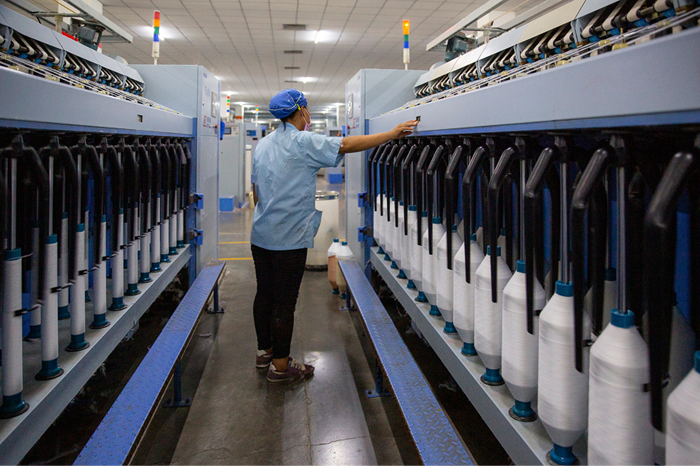"Apparel sector wage compensation is extremely low, creating a stir in the industry. A new report by Deloitte for Oxfam Australia reveals big brands are to be blamed for keeping people working for them in poverty, which means they are not paying a living wage. Oxfam describes living wage as: enough money to provide a worker and their family with food, shelter, healthcare, clothing, transportation, electricity and water, childcare and education, plus a little leftover for emergencies or savings. And that wage should be earned in no more than 48 hours a week."

Apparel sector wage compensation is extremely low, creating a stir in the industry. A new report by Deloitte for Oxfam Australia reveals big brands are to be blamed for keeping people working for them in poverty, which means they are not paying a living wage. Oxfam describes living wage as: enough money to provide a worker and their family with food, shelter, healthcare, clothing, transportation, electricity and water, childcare and education, plus a little leftover for emergencies or savings. And that wage should be earned in no more than 48 hours a week.

The report says, on an average, only 4 per cent of the price of an article of clothing sold in Australia goes toward garment workers’ wages. That’s 40 cents on a $10 T-shirt. In Bangladesh, that percentage drops to 2 per cent, where workers earn as little as 33 cents an hour; Indonesia, its 48 cents an hour; Vietnam, they make 49 cents an hour. If brands absorbed the cost of paying living wages within their supply chain, it would cost them less than 1 per cent of the price of a garment. Indeed with profits being made at the factory, wholesale and retail levels in garment supply chains, there is room for big brands to absorb these costs without passing them on to consumers.
Pay disparity
As per reports, just eight men around the world held the same amount of wealth as half of all humanity. One of those eight men is Inditex founder Amancio Ortega. Perhaps, there is no starker example of the growing global inequality than the garment industry, where millions remain trapped in poverty, while a few amass great wealth. Though garment industries have improved economic conditions of many low-cost sourcing countries, benefits have not been shared at the bottom. Oxfam says, Asia is home to most of the world’s garment production. Although the region has experienced strong economic growth in, the poorest 70 per cent of people in Asia have seen their income share fall. Meanwhile, the share held by the top 10 per cent increased rapidly.
What needs to be done
In Bangladesh, a living wage would be more than five times the current minimum wage. In India, it’s three times more, and in Indonesia, Vietnam and China, a living wage would be more than four times the minimum wage many workers are being paid. Oxfam points out the apparel industry can afford to pay a decent wage to garment workers. On a $25 T-shirt, if a company opted to pay a living wage, factory labour costs would maybe jump from $1.00 to $1.15 and transport and tariff costs would go from 75 cents to 77 cents. That would mean supply chain only needs to absorb 17 cents more. Profit margins vary from 3.4 per cent to 8.4 per cent based on the product and sourcing destination. If manufacturers and brands absorb the costs rather than pushing them to consumers, their margins will only drop a little to allow workers to earn a living wage. This is especially the case if wholesalers and retailers also work to reduce their overhead costs. The only way to make inroads with living wages is through government intervention.
The report suggested to recognise purchasing practices and pricing policies have an impact on wages (and working conditions) and commit time and resources to calculate labor costs of merchandise to ensure prices facilitate payment of a living wage at the least. This means the freight on board (FOB) price should cover a living wage labor cost.












